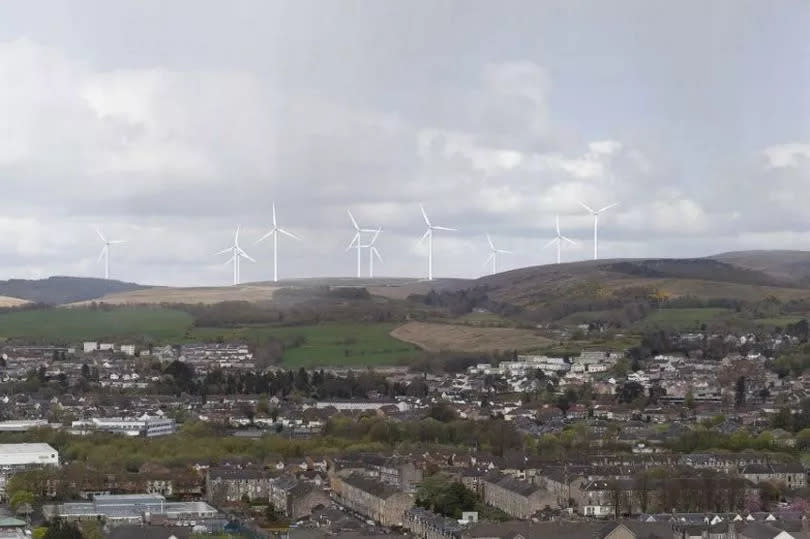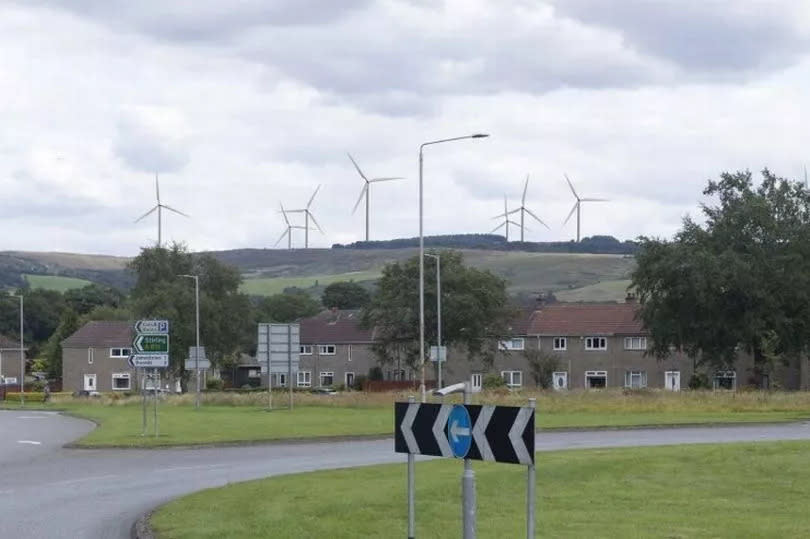Loch Lomond charity chief brands windfarm opponents "Nimby zealots"

A Loch Lomond conservation charity has slammed opponents of a windfarm in Alexandria, saying a community council’s survey on the matter has “the reliability of a Russian election.”
Friends of Loch Lomond and the Trossachs (FOLLAT) chair John Urquhart last week issued a stinging statement - hitting out Balloch and Haldane Community Council (BHCC) and Loch Lomond and the Trossachs National Park Authority, both of whom have objected to the Vale of Leven Windfarm proposal.
The plans, if approved, would see up to 10 turbines of up to 250m in height built on land at Auchenreoch Muir by Glasgow based Coriolis Energy. The 70MW turbines would be the largest in Scotland.
Last month the National Park Authority formally objected, with a meeting of the authority’s planning and access committee told: “With a very intrusive and industrial appearance, the turbines would considerably detract from, contrast with and often compromise a very large number of Special Landscape Qualities and key characteristics that are integral to defining this iconic part of the National Park.”
BHCC also objected following a community meeting, with 32 attendees voting against - and just four in favour.
However, FOLLAT chair John Urquhart has labelled opponents “nimby zealots”, called concerns relating to solar flicker, noise and the turbine’s output “vacuous bunkum” - and urged the National Park authority to reconsider their objection.
Mr Urquhart, a retired geography teacher who lives in Helensburgh, said: “The National Park Authority are, after all, supposed to be the guardians of Loch Lomond and The Trossachs, so you might expect them to come out fighting against anything that might damage the place.
“Their arguments are of the all too familiar not in my backyard (NIMBY) variety.
“Of course wind turbines are essential. But can you please put them somewhere else because we don’t like the look of them.
“BHCC did a survey and found 70 percent of people agreed that they too didn’t like the look of wind turbines. But this is pathetic stuff. Self-elected community councils are infamous for their opinion surveys, which have all the reliability of a Russian election. A National Park, with all the resources it has, really should be doing better.”
He continued by rubbishing concerns raised, saying: “There is no good evidence that wind turbines spoil views or are hugely unpopular.
“There is plenty of evidence of course of the activities of a few nimby zealots writing letters claiming their house prices are falling, the turbines are noisy, and that the turning blades cause flicker which can damage your mental health.”

A spokeswoman for BHCC responded: “The chair of FOLLAT has no right to comment on this matter. He does not reside in the area and will not be impacted by the wind farm development.
“BHCC questions whether the post of chair of a charity that has a specific geographic focus on an area should be held by a person who does not live in the said area. Evidently from his letter, he does not care about the democratic process and listening to the local community on matters of importance. The tone and content of this letter demonstrate characteristics that are not fitting for someone in such a position.”
A spokeswoman for Loch Lomond and The Trossachs National Park Authority said: “The proposed development would see some of the largest wind turbines in Scotland installed adjacent to the National Park. The Park Authority’s Planning and Access Committee considered the impacts this could have, at a meeting held in public in February, and voted unanimously to object to the proposed wind farm.
“This decision was based on the significant adverse impacts that such a development would have on the special landscape qualities of the National Park, settlements within the National Park and on the views enjoyed by residents and visitors. Tackling the climate and nature crises is right at the heart of our new National Park Partnership Plan. However, developments that could have a positive impact on carbon emissions must also be sensitively designed in the setting of a special landscape.”

 Yahoo News
Yahoo News 
